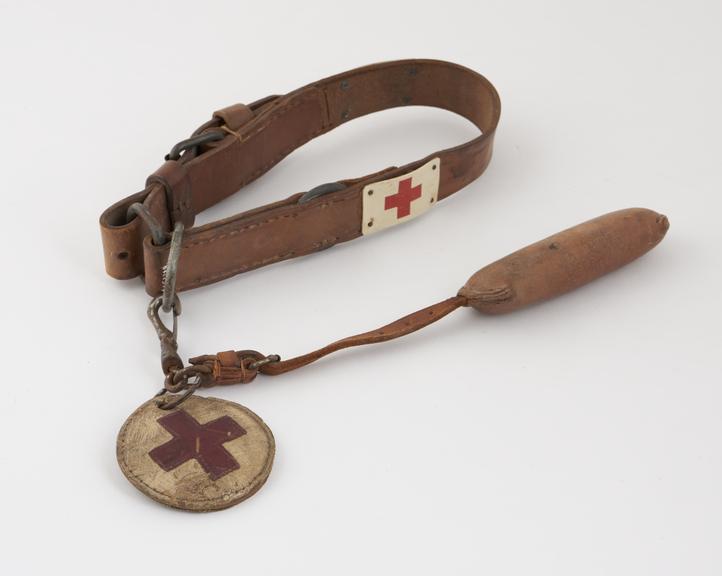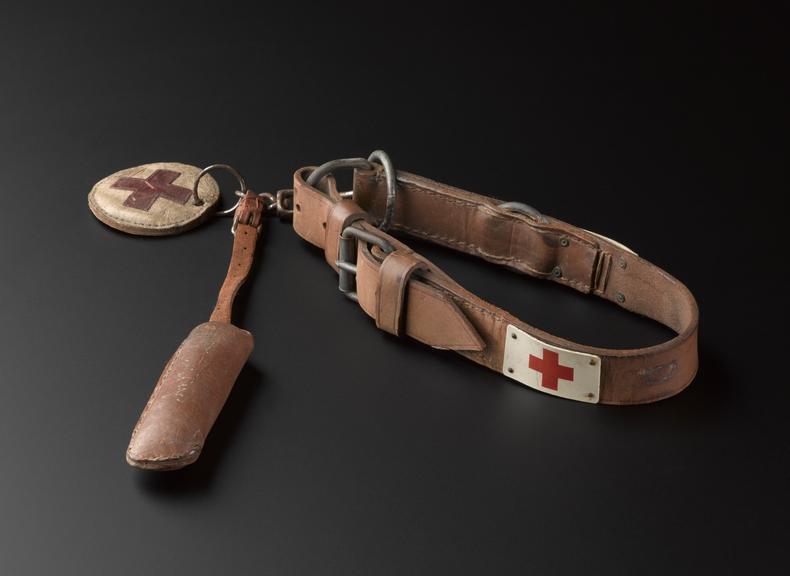








Red Cross dog collar, leather with metal fittings, plastic Red Cross labels, worn by dogs assisting German Army personnel, by A. Kassner of Berlin, 1914 to 1918
Marked with the red cross – a universally recognised medical symbol – this collar was worn by a dog trained to locate dead and wounded soldiers during the First World War. Usually under the cover of night such dogs searched the no man’s land between opposing trenches. In Germany, they were known as Sanitäshunde – the Allies called them medical dogs. The dogs were able to tell the difference between a dead soldier and one that was merely unconscious.
Some dogs were equipped with bottles of brandy and rope so stretcher bearers and rescue parties including medics could find the injured man. Dogs were also used as messengers and were employed again in the Second World War.
Details
- Category:
- Therapeutics
- Collection:
- Sir Henry Wellcome's Museum Collection
- Object Number:
- A652328
- Measurements:
-
overall: 30 mm x 280 mm x 96 mm, 150 mm, 0.24kg
- type:
- dog collar


